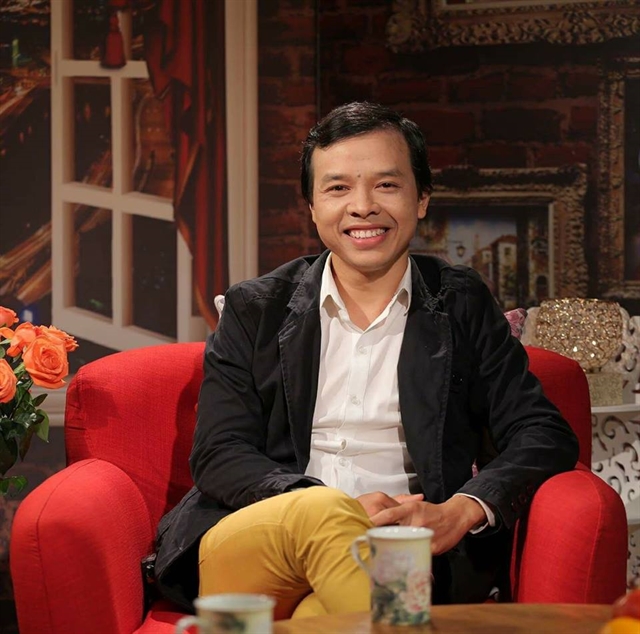The last remaining performer of pantomime says that he sees the beauty of body language. It uses only physical movements to convey a story, rather than relying on any dialogue or text.

Mime artist Hoàng Tùng. Photo songtre.com.vn
Mime artist Hoàng Tùng has been honoured for his efforts to keep pantomime alive in Việt Nam at The Sounds of Brotherhood project of the World Youth Orchestra Foundation. The project took place last year in Việt Nam to support local artists, with collaboration of the Italian Embassy and the Việt Nam Institute for Culture and Arts.Tùng walked about his unique pantomime work in Việt Nam.
You may be a rare mime artist in Việt Nam. Why do you still follow the art form?
Việt Nam used to have a whole generation of mime artists including Đặng Dũng, Kế Đoàn, Phúc Dĩ and Bích Ngọc. According to my understanding, only Dũng studied in Russia.
After them, it was only me still performing pantomime. Drama is my career and mime is the most important part for me, but it is not the only thing that I follow. I want to expand my performance skills.
I choose pantomime because I just like doing what no one else does, however I do wish there were more artists performing mime with me.
It is not good to have only one artist performing this kind of art form because it can become boring. Art needs to be diverse in order to meet external audience demands.
Why did you quit your job at the Việt Nam Youth Theatre?
I pursued mime because I see the beauty of body language. It uses only physical movements to convey a story, rather than relying on any dialogue or text.
I love the feeling of being alone with black clothes and just music on the stage telling stories to the audience with just my physical movements.
An entire imaginary world is conveyed simply within the actors' movements. Mime is one of the most traditional and loved forms of theatre in the world and it would be highly regettable if mime disappears in Việt Nam. I couldn't bear that thought so I decided to work in mime.
I had my first show in 2015 entitled Pantomime Returns and the second one in 2016. They were received much better than I expected. The shows spread the message about panto, particularly adults who previously thought that they used to think panto is for children.
When will you have the next show?
After the shows in 2015 and 2016 I felt empty and I thought that I needed to be inspired by new ideas and new creation.
I still continue do pantomime with a talk show and I popularize panto through social networks. My audience is not large, but they always wait for me to have new works and I don't want to disappoint them.
Last year, I had a small show to support children in the northern province of Cao Bằng affected by Typhoon Yagi.
After being honoured at The Sounds of Brotherhood project I plan to work with artist Ngọc Tú for a show which will combine symphony music and mime.
What do you do to earn a living?
After I quit my job, I was free for three years. Since 2019, I have taught at Hà Nội Academy of Theatre and Cinema. Additionally, I do art education for children at Hà Nội Arts for Youth project, which aims to nurture the soul for children through art.
I also act in some independent films. I was the lead role in the short film Tẹo by director Đồng Công Hiếu winning a Silver Kite at Việt Nam Cinematography Association Award 2024.
When did you start in pantomime?
I began to love panto from when I was a small boy watching mime shows at Việt Nam Youth Theatre. After graduation from the Hà Nội Academy of Theatre and Cinema, I worked at the theatre's newly established Experiment Troupe.
The troupe's repertoires used physical movements that are a kind of closed pantomime. At that time, I watched many foreign mime artists in Việt Nam who also inspired me.
Working on that inspiration, I began to learn pantomime from Vietnamese artists and watch foreign artist's videos to get ideas.
In 2014, I had a short training-course with a Japanese artist in Japan where I learnt how to create a mime repertoire, not just perform in a show and after that I felt I was ready to take on the Pantomime Returns show.
I myself like performing without words. A normal play relies on the dialogue, while dancing is all about moving, painting is about the colours, while panto expresses everything in physical movements.
Although I have encountered problems with my desire to pursue pantomime, I don't think I will ever be discouraged from following my favourite way of performing. VNS